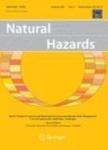版权所有:内蒙古大学图书馆 技术提供:维普资讯• 智图
内蒙古自治区呼和浩特市赛罕区大学西街235号 邮编: 010021

作者机构:Tech Univ Crete Sch Mineral Resources Engn Geodesy & Geomat Engn Lab Univ Campus Khania Crete Greece Tech Univ Crete Sch Mineral Resources Engn Appl Geophys Lab Univ Campus Khania Crete Greece Univ Kentucky Dept Min Engn Lexington KY USA Space Geomat Ltd Ksanthoudidou 10A Khania Crete Greece
出 版 物:《NATURAL HAZARDS》 (自然灾害)
年 卷 期:2016年第83卷第1-Sup期
页 面:S133-S153页
核心收录:
学科分类:07[理学] 0708[理学-地球物理学] 0815[工学-水利工程] 0706[理学-大气科学]
基 金:General Secretariat for Research and Technology, GSRT European Regional Development Fund, ERDF
主 题:Rockfall monitoring Seismic signature Multi-temporal imagery datasets STA/LTA
摘 要:The occurrence of rockfall incidents on the transportation network may cause injuries, and even casualties, as well as severe damage to infrastructure such as dwellings, railways, road corridors, etc. Passive protective measures (i.e., rockfall barriers, wire nets, etc.) are mainly deployed by operators of ground transport networks to minimize the impact of detrimental effects on these networks. In conjunction with these passive measures, active rockfall monitoring should ideally include the magnitude of each rockfall, its initial and final position, and the triggering mechanism that might have caused its detachment from the slope. In this work, the operational principle of a low-cost rockfall monitoring and alerting system is being presented. The system integrates measurements from a multi-channel seismograph and commercial cameras as the primary equipment for event detection. A series of algorithms analyze these measurements independently in order to reduce alarms originated by surrounding noise and sources other than rockfall events. The detection methodology employs two different sets of algorithms: Time-frequency analyses of the rockfall event s seismic signature are performed using moving window pattern recognition algorithms, whereas image processing techniques are utilized to deliver object detection and localization. Training and validation of the proposed approach was performed through field tests that involved manually induced rockfall events and recording of sources (i.e., passing car, walking people) that may cause a false alarm. These validation tests revealed that the seismic monitoring algorithms produce a 4.17 % false alarm rate with an accuracy of 93 %. Finally, the results of a 34-day operational monitoring period are presented and the ability of the imaging system to identify and exclude false alarms is discussed. The entire processing cycle is 10-15 s. Thus, it can be considered as a near real-time system for early warning of rockfall events.